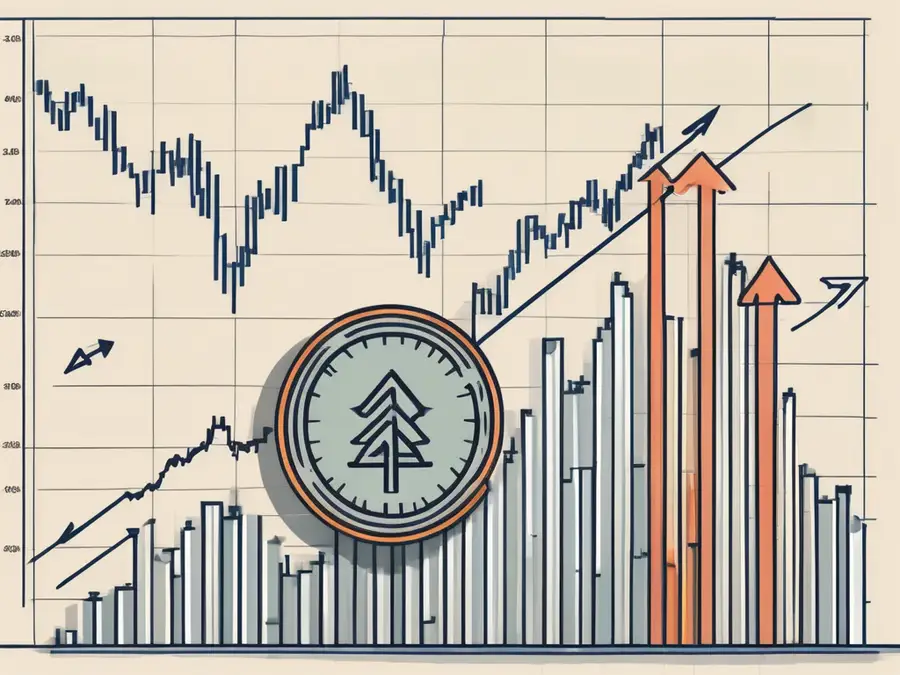Averaging Down in Investing: How to Turn Market Dips Into Profit Opportunities

Averaging down is a strategy many investors employ during market downturns. As an experienced investor, having navigated turbulent markets, I've found that understanding and effectively using this strategy can pave the way for turning market misfortunes into profit opportunities. Let's delve into the intricate details of averaging down and how it can be an asset to your investment portfolio.
Understanding the Concept of Averaging Down
The Basic Principle of Averaging Down
Averaging down refers to the practice of purchasing additional shares of a stock at a lower price than the original purchase. This effectively lowers your average cost per share. For instance, if you bought 10 shares of Stock X at $50 each ($500 total), and the price drops to $30, buying 10 more shares would adjust your average cost to $40. The idea is to enhance potential returns when the stock rebounds. This strategy can be particularly appealing during market corrections or when a stock experiences temporary setbacks, as it allows investors to take advantage of lower prices without abandoning their initial investment thesis.
The Role of Averaging Down in Investment Strategy
Incorporating averaging down into your investment strategy can offer a cushion against falling prices. When executed with due diligence, it’s not merely a reflex to buy more shares but can be a calculated decision to capitalize on undervalued stocks. It becomes particularly effective in a well-researched long-term investment plan, where you're confident in the fundamentals of the company, despite short-term volatility. Moreover, averaging down can foster a disciplined approach to investing, encouraging investors to maintain a long-term perspective rather than succumbing to emotional reactions during market fluctuations. This strategy can also help investors avoid the pitfalls of panic selling, which often leads to realizing losses that could have been mitigated through a more strategic approach.
However, it’s essential to recognize that averaging down is not without its risks. If the underlying reasons for the stock’s decline are fundamentally flawed—such as poor management decisions, declining market share, or adverse economic conditions—then buying more shares could lead to further losses. Therefore, it’s crucial to conduct thorough research and analysis before deciding to average down. Investors should assess whether the stock’s decline is a temporary blip or indicative of deeper issues within the company or industry. This careful evaluation can help ensure that averaging down is a sound investment decision rather than a desperate attempt to recover losses.
The Pros and Cons of Averaging Down
The Potential Benefits of Averaging Down
Averaging down has several advantages:
- Lower Average Cost: As mentioned, buying more shares at a lower price reduces your break-even point, improving the potential for profit when the stock recovers.
- Long-Term Focus: This strategy encourages investors to maintain a long-term perspective, avoiding emotional trading decisions driven by market hysteria.
- Possibility of Higher Returns: If the stock price eventually rebounds, the returns can be substantial relative to your investment.
Additionally, averaging down can foster a sense of discipline in your investment approach. By committing to a strategy, you may find yourself more engaged in researching the company and its market environment. This deeper understanding can lead to more informed decisions in the future, as you become adept at identifying whether a stock is genuinely undervalued or simply in a downward spiral due to fundamental issues. Moreover, this method can help investors develop a stronger emotional resilience, as they learn to navigate the ups and downs of the market without succumbing to panic.
The Risks Involved in Averaging Down
However, averaging down is not without risks:
- False Confidence: Investors might mistakenly believe that all declining stocks will eventually recover, leading to increased losses if the company fundamentals deteriorate.
- Diminished Capital: Investing more into a losing position can drain capital that could be better allocated elsewhere.
- Market Timing Risks: The timing of additional investments is crucial. If the stock continues to fall, investors may face significant losses.
Furthermore, the psychological toll of averaging down can be significant. Investors may find themselves grappling with cognitive dissonance as they justify their continued investment in a declining stock, often leading to a reluctance to cut losses. This can create a dangerous cycle where hope overshadows rational decision-making. Additionally, the opportunity cost of tying up funds in a poor-performing asset can hinder the ability to invest in more promising opportunities, potentially stunting overall portfolio growth. Therefore, while averaging down may seem like a viable strategy, it requires careful consideration and a robust understanding of the underlying risks involved.
How to Implement Averaging Down in Your Investment Portfolio
Identifying Suitable Opportunities for Averaging Down
To effectively implement averaging down, start by identifying sound stocks that have experienced unjustified price declines. Focus on companies with strong fundamentals, robust management, and promising growth prospects. Conduct thorough research on their performance metrics, industry position, and overall market conditions before making additional purchases.
Deciding When to Average Down
Timing your purchases is just as vital as identifying potential candidates. A good practice is to set predetermined price levels where you feel the stock offers a compelling buying opportunity. Assess external factors such as overall market sentiment and economic indicators to support your decision.
Averaging Down vs Other Investment Strategies
Comparing Averaging Down with Dollar-Cost Averaging
While averaging down focuses on purchasing more shares of a declining stock, dollar-cost averaging is a systematic approach of investing fixed amounts over regular intervals, regardless of price. Each method has its merits; while dollar-cost averaging provides a less emotional approach to investing, averaging down can offer larger potential gains when executed thoughtfully.
Averaging Down Versus Buy and Hold Strategy
Buy and hold involves purchasing stocks and holding onto them irrespective of market fluctuations. Averaging down, on the other hand, requires active management and a willingness to invest more in the face of declining prices. Depending on your risk tolerance and investment timeline, you may choose one strategy over the other, or even integrate both approaches.
Key Considerations Before Averaging Down
Assessing Your Risk Tolerance
Before committing to averaging down, it's essential to assess your risk tolerance. Are you comfortable investing more into a potentially declining asset, or do you prefer to cut losses and explore more prosperous investment opportunities? Understanding your risk profile can guide your decision-making process.
Understanding Market Volatility and Timing
Lastly, comprehending market volatility is critical. Rapid market changes can significantly impact stock prices. Staying informed about broader market trends can help you decide whether to average down or adopt a different strategy altogether.
FAQs
What is averaging down?
Averaging down is the practice of purchasing additional shares of a stock at a lower price than your original purchase price to reduce the average cost per share.
What are the benefits of averaging down?
The main benefits include lowering your average cost, a long-term focus that discourages emotional trading, and the potential for higher returns when the stock rebounds.
What risks are associated with averaging down?
Risks include false confidence in declining stocks, diminished capital for better investment opportunities, and risks from market timing that could lead to further losses.
Is averaging down suitable for all investors?
No, averaging down is not suitable for all investors. It's important to assess your risk tolerance, understanding of market volatility, and confidence in the stocks you are investing in before proceeding.
In conclusion, averaging down can be a powerful tool in your investment arsenal when approached with caution and thorough understanding. I've personally applied this strategy during market dips and seen positive results. It's always best to conduct rigorous analysis and stay informed, turning potential downtrends into opportunities for profit.
Ready to put the strategy of averaging down into practice with a platform that's as innovative as your investment approach? Look no further than Morpher, the trading platform that's redefining the investment landscape. With zero fees, infinite liquidity, and the ability to trade across a multitude of asset classes, Morpher empowers you to seize market opportunities like never before. Whether the markets are up or down, you can trade with confidence, backed by the safety and control of the Morpher Wallet. Plus, with up to 10x leverage, your potential for profit can soar even during market dips. Sign Up and Get Your Free Sign Up Bonus today, and transform those market downturns into your financial upside with Morpher.

Disclaimer: All investments involve risk, and the past performance of a security, industry, sector, market, financial product, trading strategy, or individual’s trading does not guarantee future results or returns. Investors are fully responsible for any investment decisions they make. Such decisions should be based solely on an evaluation of their financial circumstances, investment objectives, risk tolerance, and liquidity needs. This post does not constitute investment advice.

Painless trading for everyone
Hundreds of markets all in one place - Apple, Bitcoin, Gold, Watches, NFTs, Sneakers and so much more.

Painless trading for everyone
Hundreds of markets all in one place - Apple, Bitcoin, Gold, Watches, NFTs, Sneakers and so much more.








